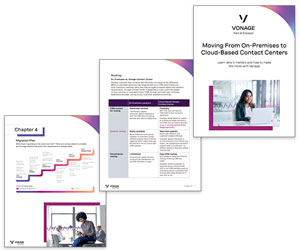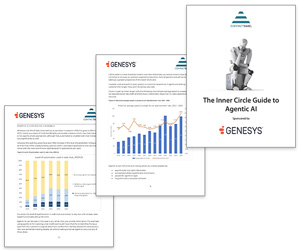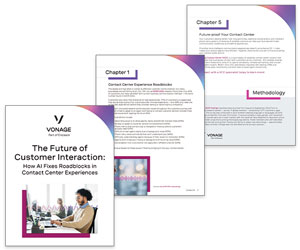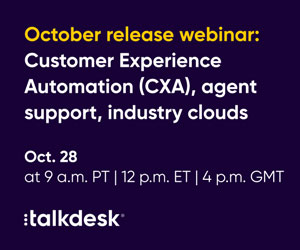Our panel of experts discuss the ways in which you may be misusing performance management tools.
1. Setting Non-Adherence Targets
Using performance management tools, businesses often set non-adherence targets, often around a target of 85%. But many contact centres will realise that advisors only achieve 85% every day, and not a percent more!
This is because advisors will have worked out exactly how to work the target and take 15% of “down-time”.

Phil Anderson
So, non-adherence should be set as a tolerance not a target. The aim is to achieve, or get as close as possible to, 100%, with the knowledge that this is rarely possible.
The tolerance will take into consideration the daily exceptions. You can then manage the individuals who consistently fall out of tolerance, whilst recognising those who consistently achieve as close as they can to 100%.
2. Expecting Technology to Embed Itself into Company Culture
One of the worst mistakes an organisation can make when deploying a quality monitoring programme is implementing the technology but not fully embedding it into the culture of the organisation.

Brent Bischoff
In line with this, we have also seen some contact centres implementing a quality monitoring solution without putting in place a dedicated executive or team to really integrate it into the operation of the centre.
A quality monitoring programme can have considerable efficiency and productivity gains if done with purpose and planning. It is therefore important as a first step to approach it as a company-wide endeavour and invest in bringing in not just the right solution, but also the right people to help accelerate adoption and implement best practice.
Brent Bischoff at Business Systems
3. Trying to Implement Too Much Too Quickly
Some performance management tools, such as interaction analytics, enable organisations to access siloes of information that they would previously not have had access to. This can lead to first-time users trying to do too much too soon when it comes to performance management.
This is a big mistake. Instead of taking on too much too quickly, a company should select one or two areas of advisor performance to focus on first.
For example, you can concentrate on reducing agents’ call handle time, ensuring compliance or script adherence etc. This targeted approach will enable performance to be improved, deliver real value to the business and build confidence in the approach to performance management.
4. Making Decisions About Advisor Performance Based on Random Calls
Managers of contact centres understand the importance of treating customers fairly, but may not realise that traditional approaches to performance management can leave advisors feeling unfairly treated.
Making decisions about advisor performance based on listening to random calls, or reviewing random interactions, can create a negative response from the advisor.

Frank Sherlock
This is because advisors may think that this random sample is not representative of their whole performance and therefore feel as though any coaching is not only unnecessary but also unfair. Advisors feeling unfairly treated can really hurt your business.
Frank Sherlock at CallMiner
5. Failing to Test Inside-out AND Outside-in
A big mistake many contact centres often make with performance management tools is that they only look at one side of their environment; they fail to test, troubleshoot and monitor inside-out as well as outside-in.
Furthermore, they may have a tool that does one but not the other. Outside-in testing is stress tests, load tests etc., on your IVR, website and other UC channels. Inside-out is troubleshooting and monitoring within your own internal environment to identify what happening in the inside.
When something comes from the outside-in, we see whether it works or not (outside-in testing). If it works: great; if it doesn’t work you need to find out why it’s not working.
What’s happening inside the organisation that’s causing it to break down? You need inside-out troubleshooting and monitoring to find out what’s going on inside.
6. Failing to Test Sufficiently in Advance of Busy Periods
Many contact centres repeatedly fail to utilise the performance management tools they have in place and do sufficient testing in advance, such as IVR testing or WebRTC testing. Why invest in performance management tools if you can’t be prepared for peak loads?
There are three ways contact centre testing can fall down; volume, timing and type.
Volume: Failing to test a big enough volume. If your normal monthly traffic is 200 concurrent transactions but peak is 500, you want to make sure you have full capacity available for those high-volume peak months.
If traffic exceeds expectations, you need to be able to deal with the increased volume to capitalise on the higher demand.
Timing: If your busiest period of the year is summer, you need to be testing at least 3 months in advance.
Why? If things go wrong, you’ll have plenty of time to solve and retest.
Finding out a fortnight before traffic surges can put immense pressure on your team and you may struggle to prioritise their time to resolve issues.

Mike Burke
Type: Contact centres are the beating heart of an organisation, with customer interactions across many channels. One type of testing won’t show up all the fail points.
Carry out different types of testing across your channels: load testing, soak testing, feature function testing, and ongoing surveillance via experience testing.
Mike Burke at IR
7. Pairing Tools with the Wrong KPIs
Achieving your KPIs should mean that you have a well-run business, but not if you choose the wrong KPIs.
Short handling times might mean that you have boosted efficiency, but if customer satisfaction falls through the floor, there’s clearly something wrong.
A good workforce optimisation system will help you to assess the best KPIs and create a balanced business.
8. Failing to Consider Compliance
For any contact centre, failing to recognise the needs of various stakeholders is a big mistake. So, their needs should be considered before you add new performance management tools to your processes.
For example, imagine you are ready to deploy a new speech analytics system which involves recording calls. Failing to consider the need for data protection or payment (PCI) compliance could stop the project in its tracks.
Even a simple system change can impact the way that agents work, their targets and how they’re rewarded. Finance and HR will need to be informed and considered.
9. Choosing the Same Tools as Your Competitors
There is a lot to be said for copying what others do, and to quote another proverb, “imitation is the sincerest form of flattery”.

Tony Reeve
But if you’re looking for competitive advantage, it may be better to be different. After all, the most successful companies compete by being different.
Simply choosing the same performance management systems as your competitors could be a very big mistake. Transformation could be just what you’re looking for.
Tony Reeve at Netcall
10. Not Having Easy Access to, or Utilising, Call Recordings
It’s important to ensure your performance management solution offers easy access to call recordings, and that you make use of them.

Ashley Unitt
Organisations can use these to identify performance or compliance issues within the business and make adjustments and changes, in order to achieve greater effectiveness and efficiency in their operation.
Furthermore, they can easily define and demonstrate what great calls sound like in individual or group training sessions.
Ashley Unitt at NewVoiceMedia
11. Failing to Create an Integrated View Across all Channels
Voice-only reporting systems already frustrate managers who are looking to maintain consistent customer service across multiple operations, and other channels, like social media and email only complicate this further.

David Paulding
So, to gain visibility of siloed information across all channels and deeper insight into advisor performance, it could be very useful to have an integrated view of all platforms.
Such technology can also produce a range of overlapping reports that contain a depth of business insight that managers can use to align their business goals with operations.
David Paulding at Genesys
Can you think of any other mistakes to avoid when it comes to performance management tools?
If so, please leave them, along with any other thoughts you may have, in an email to Call Centre Helper!
Author: Robyn Coppell
Published On: 5th Apr 2017 - Last modified: 17th Dec 2024
Read more about - Technology, Brent Bischoff, Business Systems, CallMiner, Genesys, Performance Management, Phil Anderson, Team Management, The Forum, Vonage











































Performance management tools are only as good as the policies behind them in my opinion.
Poorly thought out KPIs are worse than non at all, and poorly thought out KPIs presented through a fancy tool are just expensive and worse than non at all.
As Phil says in point 1, agents are incredibly adept at understanding how a system reports out their behaviour and how to modify their behaviour to get the system to show what they want it to show.
Either that, or the KPI drives unexpected and unwanted behaviour.
An example is when i witnessed a field engineer incentive being revised to account for the split between rural and urban based engineers. They argued, correctly, that if you were rurally based you couldn’t attend as many visits due to the sheer distance between visits.
Their bonus structure was revised to give credit for milage as long as you met a minimum 6 appointments per day. So far, so good and logical.
However, after this went live, suddenly everyone was doing 6 appointments per day (down on the previous position) but bonus payments and fuel costs went up.
It didn’t take GPS analysis to realise that the mileage part of the incentive was too heavily weighted and just resulted in engineers driving as far as they could every day while still doing the bare minimum of appointments.
Interesting that visualisation of the KPIs is not mentioned – you could do all the work in the world defining measures and reporting on them – but if no one can understand them your tool is worthless.